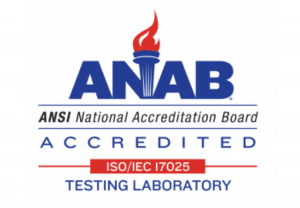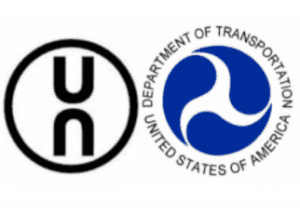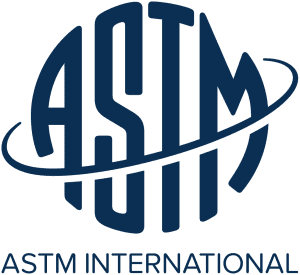Testing Standard:
ASTM D5276 Test Method for Drop Test of Loaded Containers by Free Fall
Standard Number
ASTM D5276
Standard Title
Test Method for Drop Test of Loaded Containers by Free Fall
Overview for ASTM D5276:
ASTM D5276 is used to evaluate the packaged-product’s ability to protect the inner contents when exposed to a sudden shock from a free-fall impact. This test is mainly used for full boxes, cylindrical packaging, bags and sacks. Due to the size and weight, the drop test is suitable for the containers that are manually managed throughout the distribution cycle.
The ASTM D5276 standard outlines the procedure for performing drop testing by free fall of packaged products and shipping containers to determine their ability to withstand the normal hazards of handling and transportation.
The test involves dropping the package or container in a free fall from a specified height onto a hard surface, and then inspecting the package for any damage. The testing can be performed with different types of packages or containers, such as boxes, drums, or pallets.
The following steps are outlined in the standard for performing a drop test:
1. Select the package or container to be tested, along with the orientation and configuration.
2. Place the package or container onto the drop testing apparatus in the proper position.
3. Determine the drop height based on the package weight and product fragility.
4. Release the package or container from the drop height onto a hard, flat surface.
5. Inspect the package or container for any damage, such as cracks, punctures, or deformation.
6. Repeat the test with different orientations and configurations if necessary.
The ASTM D5276 standard provides specific guidance on the proper equipment, procedures, and acceptance criteria for conducting drop tests by free fall. This testing can help manufacturers and shippers evaluate the durability and safety of their products during transportation, and make necessary improvements to the packaging design or materials.
Due to the nature of this testing, some industries like the e-commerce and manufacturing companies will benefit from a test like ASTM D5726. If a company employs this standard, many factors are likely to take place. Inevitably, there will be better packaging. What happens to the current design of the package after it is dropped will be decided and evaluated. From there, the design and engineering are liable to be changed, especially if the packaged product was highly damaged during the drop test. Eliminating or decreasing costs is also something positive that can come out of performing a drop test. The standard test method is done to try to achieve the best quality and efficiently packaging system there is out there for a particular product. Also, by using the ASTM method and certifications, the company gets put in a position to negotiate transport costs, due to the guarantee the product will withstand all environmental distribution factors during transit. Purple Diamond Testing offers ASTM D5276 Testing as part of our packaging compliance and validation services.
According to ASTM.org, “Significance and Use
4.1 This test method is intended for use in evaluating the ability of a container to withstand the sudden shock resulting from a free fall drop impact, or to evaluate the ability of a container and its inner packing to protect its contents during the sudden shock resulting from a free fall drop impact. This test method may also be used to compare the performance of different package designs. This test method may also allow observation of the progressive failure of a container and the damage to its contents.
4.2 This test method is particularly suitable for containers that are normally managed manually during some part of their distribution cycle. Containers of such bulk or mass that they cannot be managed manually may be evaluated more satisfactorily following Test Method D880, Test Methods D6055, Test Methods D6179, or Test Methods D4003. See Practice D4169 for added guidance.
Scope
1.1 This test method covers procedures for the drop testing of loaded boxes, cylindrical containers, and bags and sacks by the free-fall method.
1.2 For containers not exceeding 110 lb. (50 kg), this test method fulfills the requirements of ISO Standards 2206:1987 and 2248:1985. These ISO standards may describe procedures that do not meet the requirements for this test method.
1.3 The values said in inch-pound units are to be regarded as standard. The values given in parentheses are mathematical conversions to SI units that are supplied for information only and are not considered standard.
1.4 This standard does not purport to address all the safety concerns, if any, associated with its use. It is the responsibility of the user of this standard to set up proper safety, health, and environmental practices and decide the applicability of regulatory limitations prior to use.
1.5 This international standard was developed in accordance with internationally recognized principles on standardization established in the Decision on Principles for the Development of International Standards, Guides and Recommendations issued by the World Trade Organization Technical Barriers to Trade (TBT) Committee.”
Rationale for ASTM D5276:
Test Method for Drop Test of Loaded Containers by Free Fall. The ability to verify if a package system is sufficient to protect the inner contents during a free fall drop is paramount when confirming a package design. Based on the results, modifications to the design can be made to meet goals. This test method may be combined with other technical documents, such as some ISTA testing procedures. Having the technical documents will dictate the testing parameters, such as the height and the orientation of the fall from the top drop test height. Please read on to the key points of this test method below.
Key Points:
- Optimize costs by mitigating damages accrued through transit
- Utilize this test method to ensure quality control
- Validates material selection during box design
- Verifies the physical performance of materials used to protect inner contents during a free fall drop
Related Standards:
- ASTM D4169 – Practice for Performance Testing of Shipping Containers and Systems
At Purple Diamond, we offer a free consultation or a guided tour of our facilities. Consultations can be done over the phone or on zoom, so choose what suits you best. To get in touch, go to our Contact Us page and fill out the form or book an appointment using the calendar below. Our goal is to assist you in any way possible, so please don’t hesitate to contact us. Thank you so much for reading down this far and thank you for considering Purple Diamond as your dedicated testing, engineering, and design facility for all of your packaging needs.
Related Testing Standards
- ASTM D642
- ASTM D685
- ASTM D880
- ASTM D951
- ASTM D999
- ASTM D3078
- ASTM D3103
- ASTM D3285
- ASTM D4169
- ASTM D4332
- ASTM D4728
- ASTM D5265
- ASTM D5276
- ASTM D5277
- ASTM D5487
- ASTM D6055
- ASTM D6179
- ASTM D6344
- ASTM D6653
- ASTM D7386
- ASTM F88
- ASTM F1140
- ASTM F1886
- ASTM F1929
- ASTM F1980
- ASTM F2096
- ASTM F2250
- ASTM F3039
- ASTM D1596
Contact Us
Contact Us
Accreditations
Affiliations








